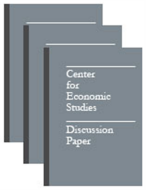Measuring Income of the Aged in Household Surveys: Evidence from Linked Administrative Records
Measuring Income of the Aged in Household Surveys: Evidence from Linked Administrative Records
Abstract
Research has shown that household survey estimates of retirement income (defined benefit pensions and defined contribution account withdrawals) suffer from substantial underreporting which biases downward measures of financial well-being among the aged. Using data from both the redesigned 2016 Current Population Survey Annual Social and Economic Supplement (CPS ASEC) and the Health and Retirement Study (HRS), each matched with administrative records, we examine to what extent underreporting of retirement income affects key statistics such as reliance on Social Security benefits and poverty among the aged. We find that underreporting of retirement income is still prevalent in the CPS ASEC. While the HRS does a better job than the CPS ASEC in terms of capturing retirement income, it still falls considerably short compared to administrative records. Consequently, the relative importance of Social Security income remains overstated in household surveys—53 percent of elderly beneficiaries in the CPS ASEC and 49 percent in the HRS rely on Social Security for the majority of their incomes compared to 42 percent in the linked administrative data. The poverty rate for those aged 65 and over is also overstated—8.8 percent in the CPS ASEC and 7.4 percent in the HRS compared to 6.4 percent in the linked administrative data. Our results illustrate the effects of using alternative data sources in producing key statistics from the Social Security Administration’s Income of the Aged publication.
Others in Series
Working Paper
Working Paper
Working Paper




